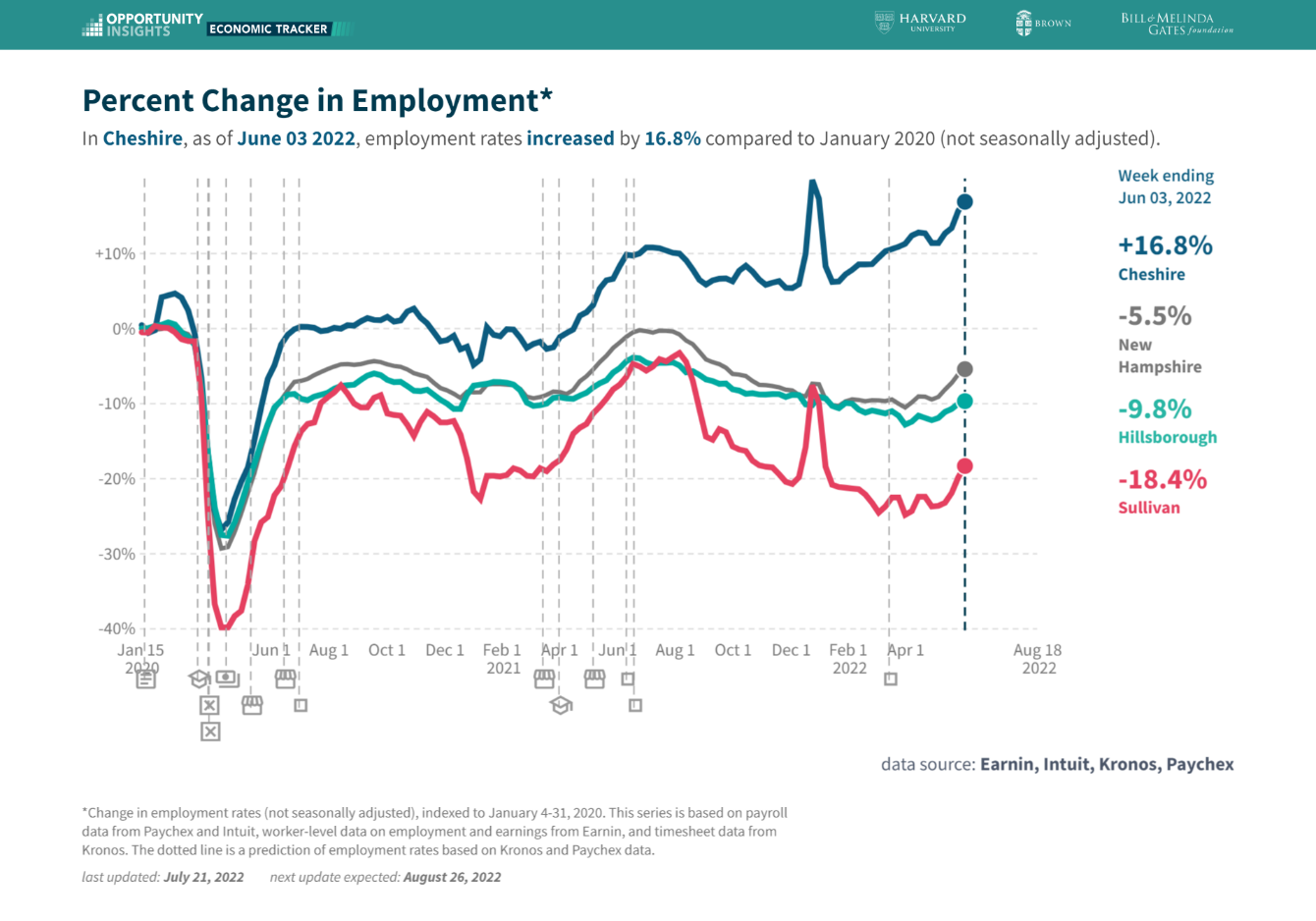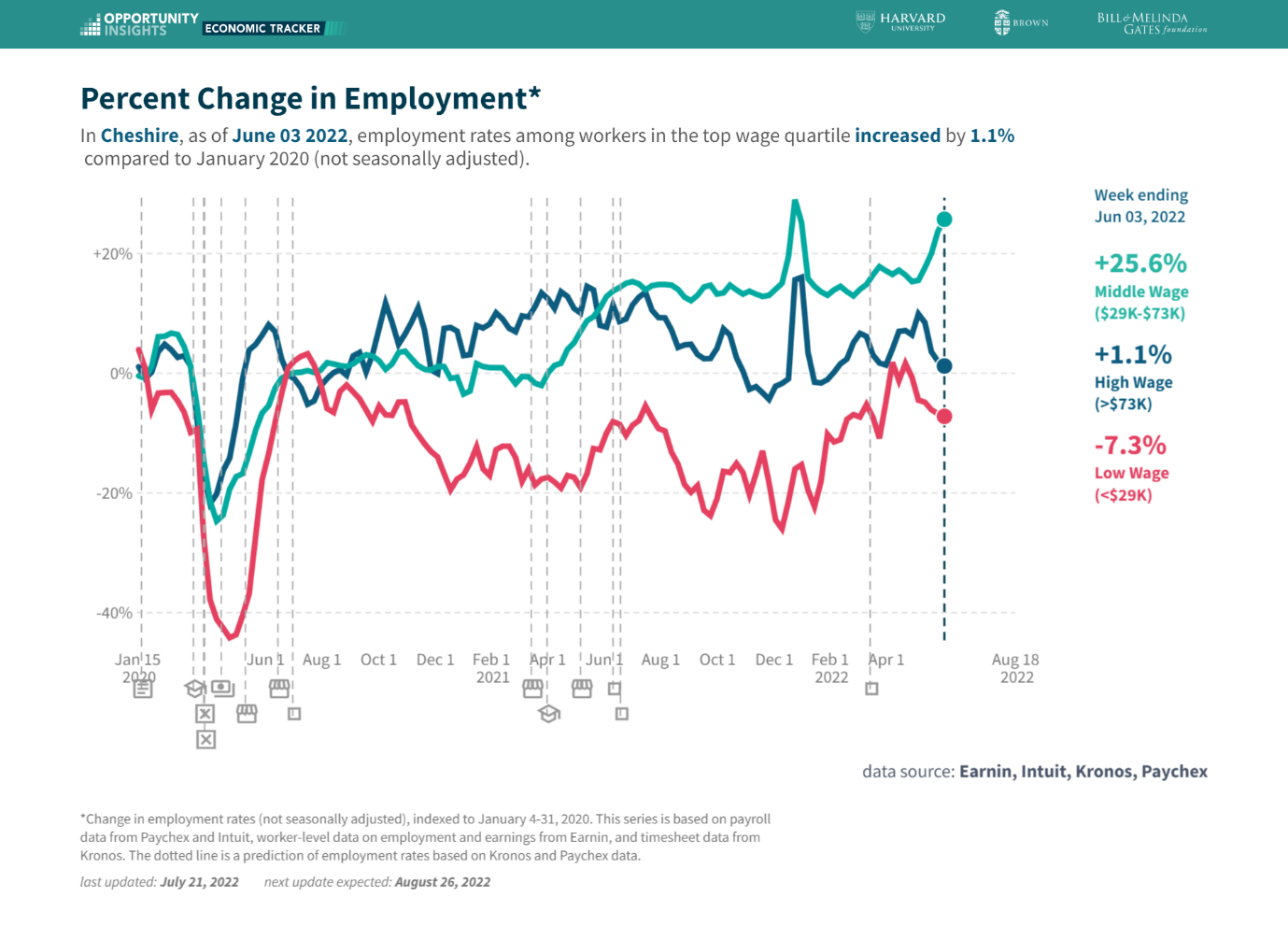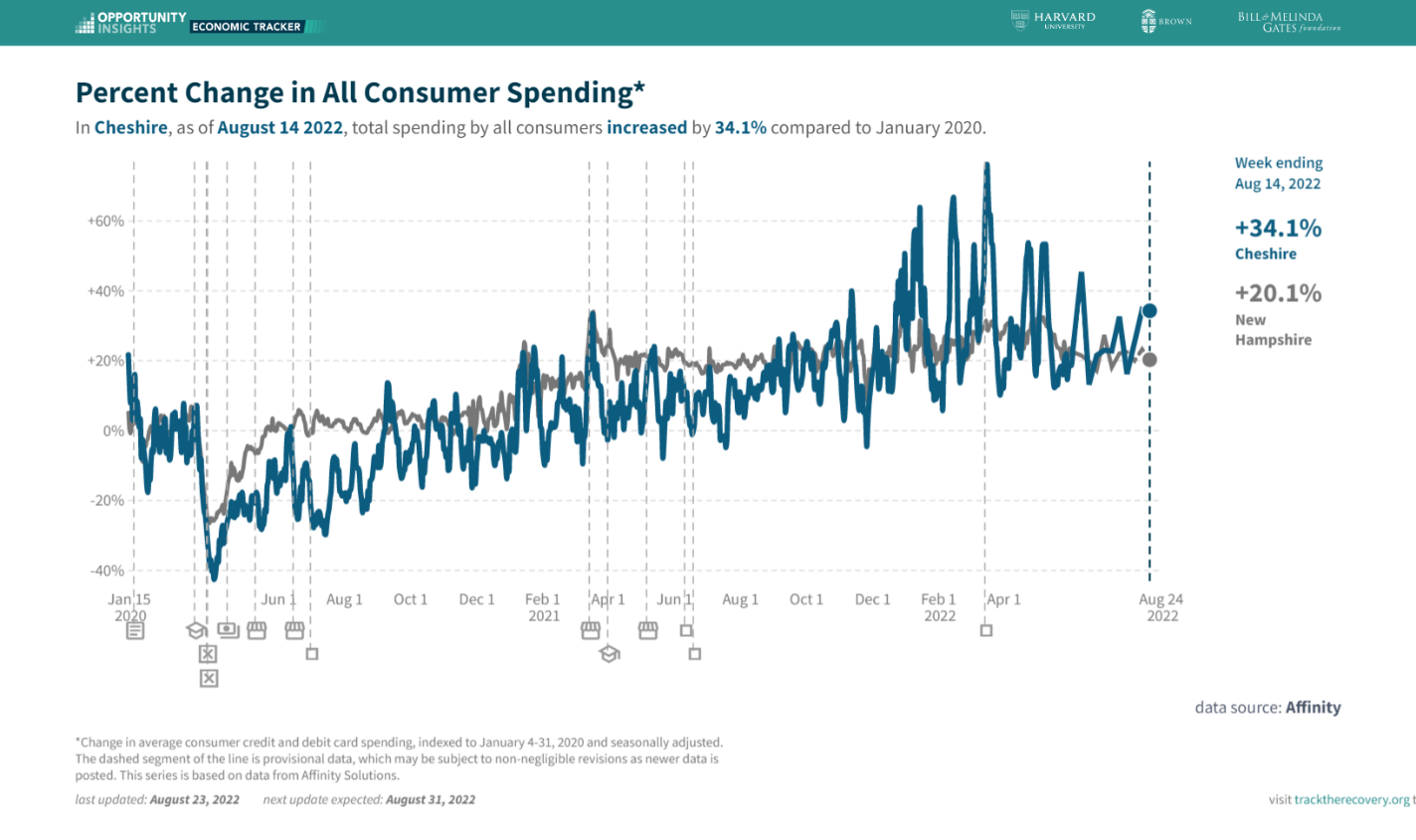As of June 2022, Cheshire County has seen growth in employment rates (when compared to January 2020) exceeding all other counties in NH. This insight comes from the Opportunity Insights Economic Tracker, available at www.tracktherecovery.org, which combines anonymized data from leading private companies – from credit card processors to payroll firms – to provide a real-time picture of economic indicators such as employment rates, consumer spending, and job postings across counties, industries, and income groups.
The increase in employment rates in Cheshire County is significant (+16.8%), as it is substantially outpacing the state as a whole (-5.5%), and even more pronounced when looking to our neighbors in Sullivan (-18.4%) and Hillsborough (-9.8%) counties. Looking across the Connecticut River, Windham County, VT is also seeing some gains compared to pre-pandemic employment rates with an increase of 8%.

Notably, these employment gains appear to be almost entirely concentrated among middle-wage positions with a 25.6% increase in employment rates among those earning between $29k and $73k. The employment rate for high wage positions (i.e., those individuals earning more than $73k) has also climbed above pre-pandemic levels. This middle- and high-income employment growth is in contrast to a decline in employment rates among those making less than $29k annually. This growth may be attributed to a wide range of separate but intertwined factors in this current economic environment. With a competitive labor market, and many businesses looking to hire, wages may be raised to attract new employees and remain competitive in the market. A look at local job boards suggests that even local fast-food restaurants, grocers, and other entry-level positions are offering pay of $15-16 per hour. Assuming a 40-hour work week, a $15/hour position would earn $31,200 per year, more than $2k above what is being classified as low wage employment.
This trend of increased wages is likely to continue locally and abroad. Amid record inflation and a labor market with two open positions for every worker, the average annual salary increase reached 4.8%, the highest pay bump in decades for employees. According to a recent survey by the compensation consulting firm Peal Meyer, this increase is still not enough and higher base wages may still be likely to come this year.

Unfortunately, there is not yet any county-level data to see which jobs sectors are driving this recent employment growth in Cheshire County. As was published in the NH Business Review in May of this year, the increase in business service employment indicates an optimistic outlook in the short-term as hires “are necessitated by thriving businesses needing more services and a general lack of talent available to hire directly.” Similarly, the more recent spike in employment in leisure and hospitality now brings these sectors much closer to pre-pandemic employment as service industry businesses experience increased demand.
In contrast to these positive economic indicators, and perhaps most concerning, is the fact that employment for workers in education and health services remains 18.7% below pre-pandemic levels. Healthcare is among New Hampshire’s largest sectors, with more than 60,000 employees statewide. Workforce projections show an increased need for nearly all health care specialties in New Hampshire; nurse practitioner positions alone are expected to increase by nearly 60% statewide by 2030, according the NH Department of Employment Security. Yet, many health care workers, especially for entry-level positions, are not highly paid, and these low wages have led to serious challenges in developing and retaining a direct care workforce. The pandemic essentially put these already present challenges into a pressure cooker, and the result was health care workers leaving the field in high numbers, particularly in nursing homes, home health, and community care settings.
Beginning in 2020, given the anticipated impact of workforce shortages on the health of New Hampshire’s economy and its people, the Forward Fund at the Endowment for Health started work on an actionable statewide plan for health care workforce development. To learn more about some proposed solutions to address the workforce challenges in health care in New Hampshire, see the recently published report Giving Care: A Strategic Plan to Expand and Support New Hampshire’s Health Care Workforce. Among the challenges identified by the report’s planning group and authors were low wages compared to high living costs in the state, a thin pipeline and barriers to training, and the fact that workforce development efforts to date have largely been siloed and lack coordination.
While it is still somewhat unclear what’s driving Cheshire County employment rates to exceed our neighboring counties and the state as a whole, this positive trend is a source of optimism for a post-COVID Southwest NH. This optimism can also be found in the fact that total consumer spending is up 34.1% since the beginning of the pandemic (as of the week of August 14th 2022). This is higher than any other county in NH (Hillsborough County is 2nd highest at 28.3%) and more than 1.5x the growth in consumer spending statewide (20.1%).
